I wrote a simple WebSocket client. I used the code I found on SO, here: How can I send and receive WebSocket messages on the server side?.
I'm using Python 2.7 and my server is echo.websocket.org on 80 TCP port. Basically, I think that I have a problem with receiving messages. (Or maybe the sending is wrong too?)
At least I am sure that the handshake is all ok, since I receive a good handshake response:
HTTP/1.1 101 Web Socket Protocol Handshake
Access-Control-Allow-Credentials: true
Access-Control-Allow-Headers: content-type
Access-Control-Allow-Headers: authorization
Access-Control-Allow-Headers: x-websocket-extensions
Access-Control-Allow-Headers: x-websocket-version
Access-Control-Allow-Headers: x-websocket-protocol
Access-Control-Allow-Origin: http://example.com
Connection: Upgrade
Date: Tue, 02 May 2017 21:54:31 GMT
Sec-WebSocket-Accept: s3pPLMBiTxaQ9kYGzzhZRbK+xOo=
Server: Kaazing Gateway
Upgrade: websocket
And my code:
#!/usr/bin/env python
import socket
def encode_text_msg_websocket(data):
bytesFormatted = []
bytesFormatted.append(129)
bytesRaw = data.encode()
bytesLength = len(bytesRaw)
if bytesLength <= 125:
bytesFormatted.append(bytesLength)
elif 126 <= bytesLength <= 65535:
bytesFormatted.append(126)
bytesFormatted.append((bytesLength >> 8) & 255)
bytesFormatted.append(bytesLength & 255)
else:
bytesFormatted.append(127)
bytesFormatted.append((bytesLength >> 56) & 255)
bytesFormatted.append((bytesLength >> 48) & 255)
bytesFormatted.append((bytesLength >> 40) & 255)
bytesFormatted.append((bytesLength >> 32) & 255)
bytesFormatted.append((bytesLength >> 24) & 255)
bytesFormatted.append((bytesLength >> 16) & 255)
bytesFormatted.append((bytesLength >> 8) & 255)
bytesFormatted.append(bytesLength & 255)
bytesFormatted = bytes(bytesFormatted)
bytesFormatted = bytesFormatted + bytesRaw
return bytesFormatted
def dencode_text_msg_websocket(stringStreamIn):
byteArray = [ord(character) for character in stringStreamIn]
datalength = byteArray[1] & 127
indexFirstMask = 2
if datalength == 126:
indexFirstMask = 4
elif datalength == 127:
indexFirstMask = 10
masks = [m for m in byteArray[indexFirstMask: indexFirstMask + 4]]
indexFirstDataByte = indexFirstMask + 4
decodedChars = []
i = indexFirstDataByte
j = 0
while i < len(byteArray):
decodedChars.append(chr(byteArray[i] ^ masks[j % 4]))
i += 1
j += 1
return ''.join(decodedChars)
# connect
sock = socket.socket(socket.AF_INET, socket.SOCK_STREAM)
sock.connect((socket.gethostbyname('echo.websocket.org'), 80))
# handshake
handshake = 'GET / HTTP/1.1\r\nHost: echo.websocket.org\r\nUpgrade: websocket\r\nConnection: Upgrade\r\nSec-WebSocket-Key: gfhjgfhjfj\r\nOrigin: http://example.com\r\nSec-WebSocket-Protocol: echo\r\n' \
'Sec-WebSocket-Version: 13\r\n\r\n'
sock.send(handshake)
print sock.recv(1024)
# send test msg
msg = encode_text_msg_websocket('hello world!')
sock.sendall(msg)
# receive it back
response = dencode_text_msg_websocket(sock.recv(1024))
print '--%s--' % response
sock.close()
What is wrong here? It gets complicated after the handshake.
The dencode_text_msg_websocket method returns an empty string but it should return the same string I send to the server, which is hello world!.
I DO NOT WANT to use libraries (I know how to use them). The question is about achieving the same thing WITHOUT libraries, using only sockets.
I only want to send a message to echo.websocket.org server and receive a response, that's all. I do not want to modify the headers, just build the headers like they're used by this server. I checked how they should look like using Wireshark, and tried to build the same packets with Python.
For tests below, I used my browser:
Not masked data, from server to client:
Masked data, from client to server:

